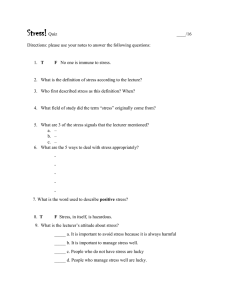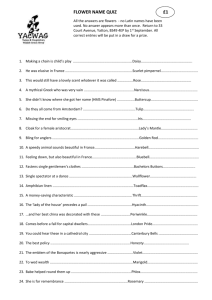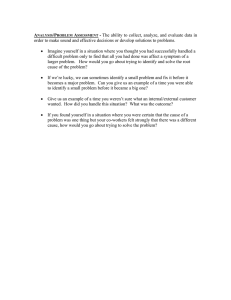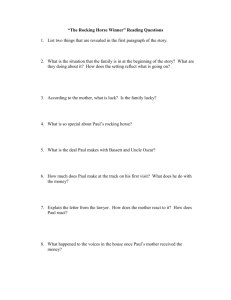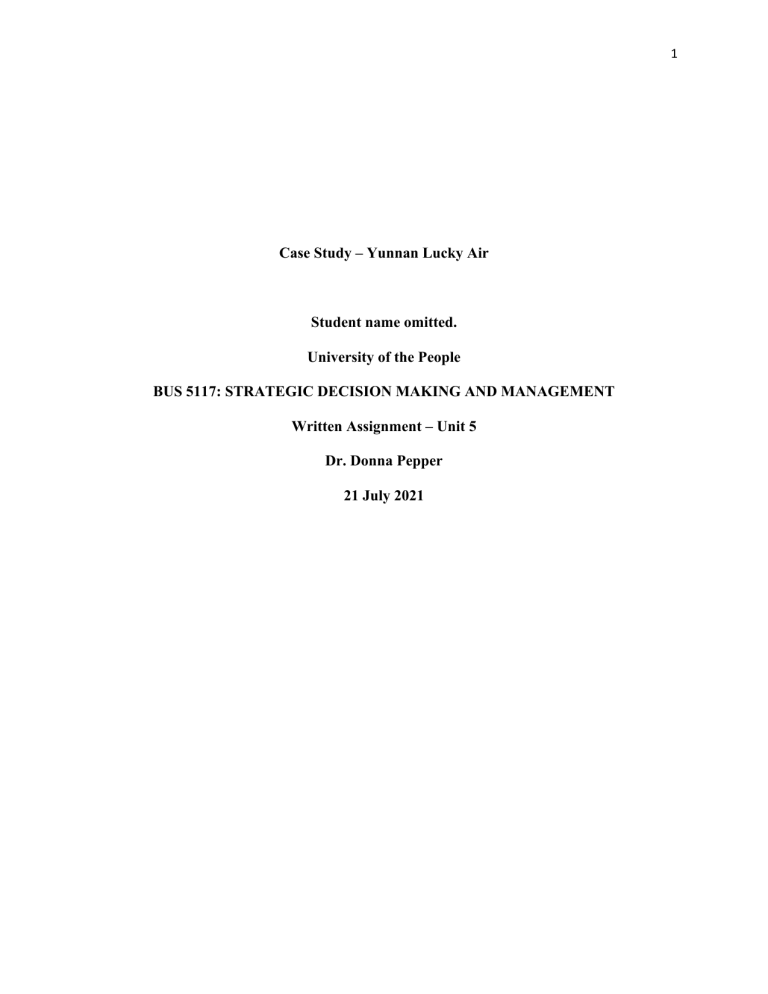
1 Case Study – Yunnan Lucky Air Student name omitted. University of the People BUS 5117: STRATEGIC DECISION MAKING AND MANAGEMENT Written Assignment – Unit 5 Dr. Donna Pepper 21 July 2021 2 Abstract: We read the case study “E-commerce at Yunnan Lucky Air,” and then reflect on the challenges of the organization as they relate to costs. We analyze the costs and, using specifics, develop a cost-centered business strategy for the airline to move forward as a profitable firm. We then devise a tactic to differentiate the firm and to support the cost-focused strategy we have developed. We conclude by stating how the tactic can be implemented within the scope of the overall strategy. The international market is becoming more crowded with new operators. The latest will be Lucky Air – the Kunming-based LCC division of the HNA Group and U-FLY Alliance. Lucky intends to deploy 787-9s to Europe and North America by the end of 2016. (CAPA, 2016) Introduction: Lucky Air was formed in 2004 and is based out of Kunming, Yunnan, China. It started operations within the Yunnan province to take advantage of the growing number of tourists to the region. Lucky Air was helped by the government's decision to grant limited licenses to operators and the tourist attractions of Yunnan province. This helped it to grow rapidly despite several challenges within the Chinese Air Industry. The Challengers for Lucky Air: The Airline Industry in China was subject to strict regulations by the authorities. Hence, the scope to expand and operate as per market demands is limited. One of the important factors for airline operations is the fuel price. In China, not only has Lucky Air must pay the fuel prices upfront, it also cannot hedge fuel prices. Also, the fuel prices were slightly higher in Yunnan province compared to the rest of China. The landing fees and taxes were also regulated leading to higher costs. Aircraft leasing was another challenge. Lucky Air has to wait for a long period of time to lease the aircraft as it was subject to the approval of the relevant authorities. The other challenge was the e-commerce system in China which dissuaded customers 3 from booking directly on Lucky Air’s website. However, Lucky Air was able to get their parent company’s help on the technology side. Hence the cost of operations for Lucky Air was higher compared to its US or European counterparts. Cost-centered business strategy for Lucky Air: Most of the challenges are due to government regulations and controls, which are beyond the control of Lucky Air. Hence, one area where Lucky Air can focus on is to make it easy for its customers to book tickets through their websites. Their parent company, Hainan airlines has a strong information system and IT infrastructure. Lucky Air can leverage this and invest in web applications for easy ticket booking, cancellations, and modifications. This will ease customer's difficulties with ticketing. Lucky Air can develop mobile apps and provide all its website facilities there. Also, like Southwest Airlines, Lucky Air can allow its customers to post their experience and allocate customer service staff to take care of the needs of passengers who are not using the internet by setting up a call center. Lucky Air can focus on improving its customer service as well simultaneously. Lucky Air can also offer web check-in and self-check-in facilities at airports to reduce their costs. Historically, the airline industry continues to be brutally competitive, even though the business of flying people all over the world and country has become an integral part of human life. The cost of flying continues to trend lower. The Internet has also created greater price transparency, reducing margins. (Beers, 2020) Differentiation strategy for Lucky Air: The best way for Lucky Air to differentiate itself is by using its IT systems and customer-focused service. By building a robust IT system that offers all facilities an airline traveler would expect and expand the capabilities of its website and mobile apps can act as a great differentiator. Lucky Air will have to communicate this differentiation strategy to its customers through advertisements and targeting specific travel groups. Another 4 differentiation would be its customer service. By attending to all the needs of its customers in a friendly manner including assisting in baggage and providing a wholesome experience to customers would be a great advantage for Lucky Air and this can act as a great differentiation strategy. Such a differentiation strategy will go hand in hand with its cost-focused strategy as well. A differentiation strategy is an approach to business development whereby a business offers its audience a product or service that is one-of-a-kind, different, and distinct from what the competition offers. (Famy, 2021) Conclusion: Both the cost-focused strategy as well as the differentiation strategy stated above can be included in the overall strategy of Lucky Air. It has the support of its parent group namely Hainan Airlines, which will help it to implement this strategy successfully. By offering excellent customer service and making customers self-reliant like Southwest Airlines, Lucky Air can minimize its operational costs and try to maximize the permissible limits for leasing and route enhancements within the government regulations. 5 References Beers B, (October 7, 2020), Which major expenses affect airline companies? https://www.investopedia.com/ask/answers/040715/what-are-major-expenses-affectcompanies-airline-industry.asp CAPA - Centre for Aviation, (July 18, 2016), Lucky Air to be China's first long haul LCC, to Europe/N America in 2016, https://centreforaviation.com/analysis/reports/lucky-air-to-bechinas-first-long-haul-lcc-flying-to-europe-late-2016-china-international-up-29-292294 Famy J, (February 10, 2021)The Pros and Cons of a Differentiation Business Strategy https://advancepointcap.com/differentiation-strategy/
